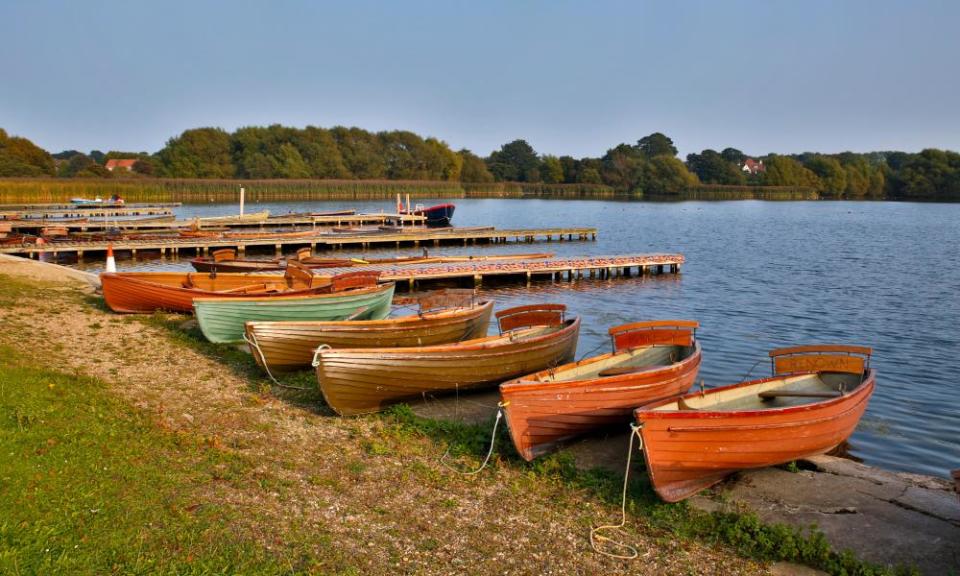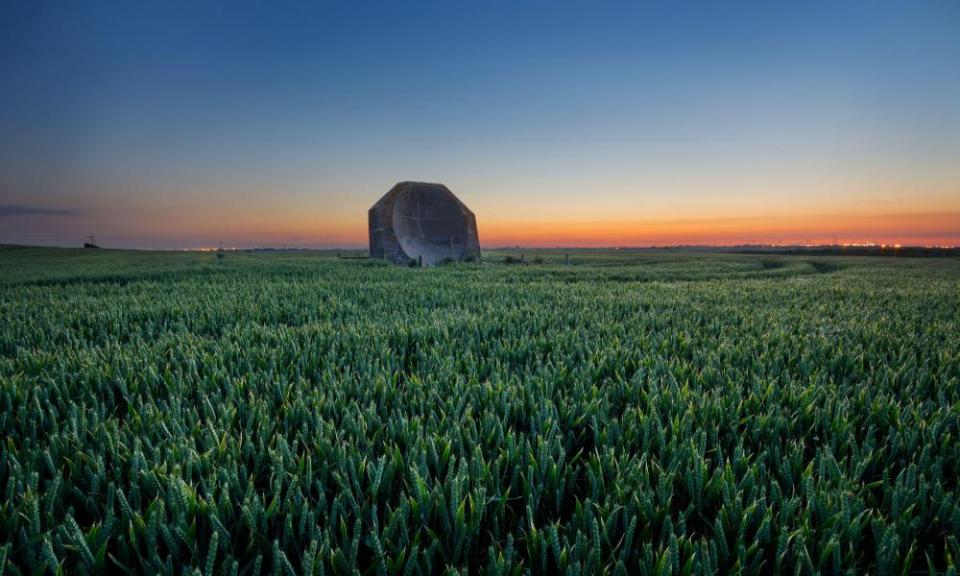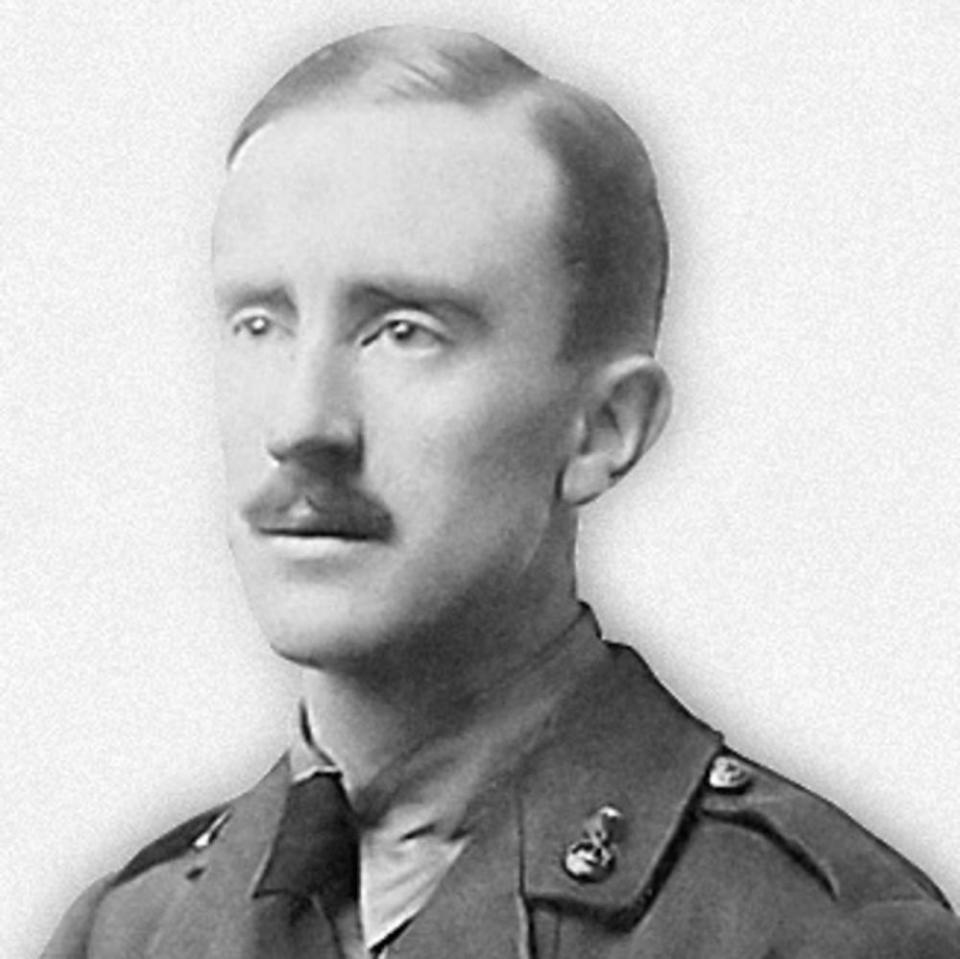Dreaming shires: how East Yorkshire shaped Tolkien’s Middle-earth fantasy

Trench fever. I used to imagine it akin to flu, or Covid even, but this is in some ways a nastier disease. Caused by bacteria carried on lice, its symptoms include high temperature, headache and excruciating pains in the legs and back. And though symptoms fade after some days, the Bartonella quintana bacterium keeps rearing its debilitating head, causing relapses for months or years.
Nasty, then. But had it not infected a 24-year-old officer fighting on the Somme in 1916, the world might never have had The Lord of the Rings or The Hobbit, Peter Jackson would have had to find other stuff to occupy the early years of this century, and Amazon would not be preparing to launch the most expensive television series ever made – The Lord of the Rings: The Rings of Power.
After the mud and horror of the front, this quiet land rising gently to the coast must have seemed paradisiacal
Second lieutenant JRR Tolkien was shipped home sick in November 1916 and was never “fighting fit” again. He spent the rest of the war on light duties in East Yorkshire – the former officers’ hospital in Hull where he was treated is up for sale – while comrades at the front died in such numbers that by 1918 his battalion, the 11th Lancashire Fusiliers, numbered just 14 men and was disbanded.
Tolkien’s Shire is based on rural Worcestershire – and the Misty Mountains on the Swiss Alps – but the author’s time in this remote coastal area inspired chief elements in his tales, including Middle-earth’s greatest love story.
Hull is said to be at the end of a 50-mile cul-de-sac, which makes the Holderness plain to its east a hinterland beyond a road to nowhere. But after the mud and horror of the front, this quiet agricultural land rising gently to the coast must have seemed paradisiacal, especially as spring and summer 1917 were “brilliantly fine and warm”, according to military reports.
Places connected with the author, who while he was here wrote poems and stories, and devised two of his mythological languages, have now been gathered into the Tolkien Triangle, a trail stretching from Hull north-east to Hornsea and south to Kilnsea. I took a tour with Phil Mathison, a musician and author who researched letters and parish and military records for his book Tolkien in East Yorkshire (Dead Good Publications, £9.99).
Hull may be a dead end, but its port made it a target for Germany. For fear of a land invasion, defence batteries were established along the east coast. Though that invasion never came, these camps were where Tolkien, when fit enough, spent much of 1917 and 1918.
Even without the Tolkien connection, this bit of East Yorkshire is an atmospheric spot, the elegantly curved coast dwindling to three-mile Spurn peninsula, a narrow sliver of land between sea and estuary, renowned for birdwatching.

The prettiest resort is Hornsea, with a sand-and-shingle beach and cute Victorian streets between the wide, lawned prom and Hornsea Mere, the largest lake in all four Yorkshires. Tolkien had married shortly before embarking for France, and when he was posted initially to Hornsea musketry camp early in 2017, his wife, Edith, took the opportunity to be near him, staying in a modest house (with blue plaque) near the Mere on Bank Terrace.
Tolkien spent most of his time down the coast at Thirtle Bridge Camp, near Tunstall, training to be a signals officer: battalion HQ is now Sand Le Mere holiday park. The fact that this is northern Europe’s fastest-eroding coastline (up to four metres a year) is obvious here: the edge of the land is raw and ravaged, and stretches of footpath regularly topple down the low cliffs. This and tales the author must have heard of Yorkshire’s “Lost Atlantis”, Ravenser, a large port in the Humber destroyed by storm and flood in the mid-1300s, probably inspired his lost realm of Númenor, sunk by a great wave in the second age.

To be nearer her husband, Edith moved down the coast to Withernsea – there’s a blue plaque marking her lodgings in what is now the Lifeboat fish and chip shop. This once-scruffy resort is looking up, with a redeveloped prom above its huge sandy beach. A photograph held by the Tolkien estate shows Edith and JRR on these sands – him very thin from his illness. Some say the town’s lighthouse – fairly new in Tolkien’s day – inspired Saruman’s Orthanc tower.
Related: Amazon’s Lord of the Rings cast reveal clips from The Rings of Power at Comic-Con
Probably more credible is the inspiration for Middle-earth names. Yorkshire until 1974 was in three “ridings” – the word means a third; Tolkien’s Shire is in four “farthings” or quarters.
The name of Frodo, his questing hero, may have come from the village of Frodingham, near Hornsea. Frod meant wise in Anglo-Saxon – Tolkien loved the way that old language lingers in East Yorkshire placenames. Frodo’s father was Drogo Baggins: probably after baron Drogo de la Bouerer, who owned much of Holderness in the 11th century.

As a signals officer, Tolkien would have had duties at Kilnsea’s precursor to radar, the concrete sound mirror, which focused the sound of aircraft engines on to a microphone. It still stands today, peering towards the sea from a field north of the village.
We stayed a few miles away at North Star Sanctum, a development of one-and two-bedroom lodges opened in 2019. Reached along undulating, tree-lined lanes, they’re in a gloriously peaceful spot that comes into its own after dark. As in 1917, there is no light pollution here: gazing up at the clear, spangled sky, I could see why Tolkien gave such importance to stars and starlit nights. (Though I can’t imagine what he would have made of watching them from a hot tub.) I even spotted Venus – AKA Eärendil, the elves’ most beloved star – towards the sea one early morning.
The most poignant site is Roos, where, says Mathison, “Tolkien reality merges with myth”. The pretty, sleepy village is little more than a mile from Thirtle Bridge, perfect for a bit of R&R for JRR and his wife. The newly pregnant Edith danced for her husband in what he called in later writings “a hemlock glade”. Experts agree that this was Dent’s Garth, a wood near the village, which still has a glorious understorey of frothy cow parsley.
Related: A guided walk of Tolkien’s original Shire, in Birmingham
The sight of his light-footed wife inspired an essential part of what would become The Silmarillion: the tale of elf-maiden Lúthien, whom mortal hero Beren first spies in a sylvan glade. The star-crossed lovers are reflected in The Lord of the Rings’s Aragorn and Arwen (and Amazon’s Arondir and Bronwyn).
Dent’s Garth curves around two sides of Roos’s 13th-century church, with a yew avenue and the remains of a Norman watchtower. It’s the most beguiling spot in the whole Tolkien Triangle. Men were dying in France, but this joyous scene in a sun-dappled copse betokened a future worth fighting for.
• The trip was arranged by England’s Coast and Visit East Yorkshire, with accommodation at North Star Sanctum, whose luxury lodges cost from £315 for a three-night stay. More information from englandscoast.com and visiteastyorkshire.co.uk


